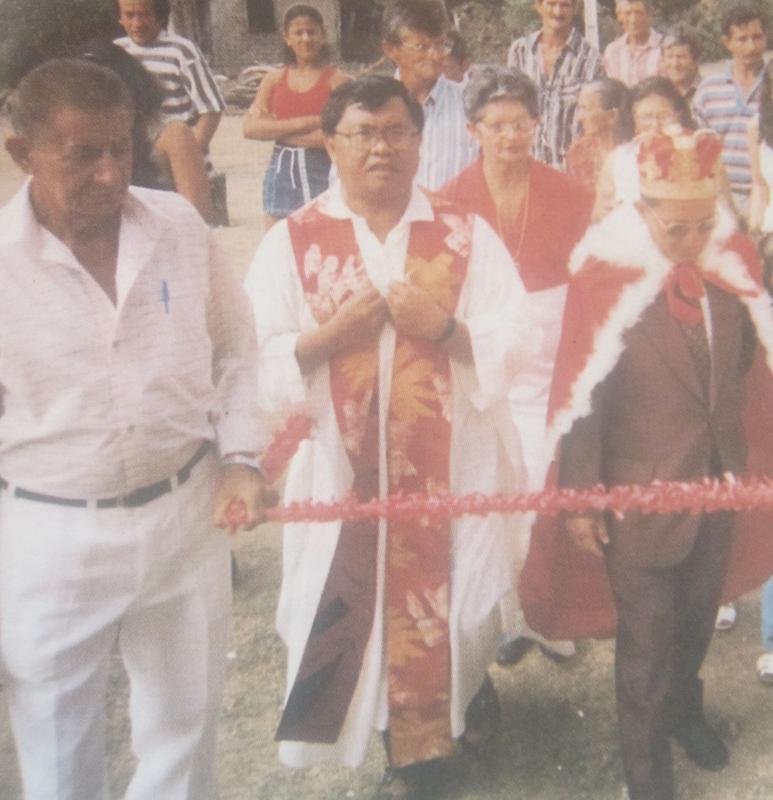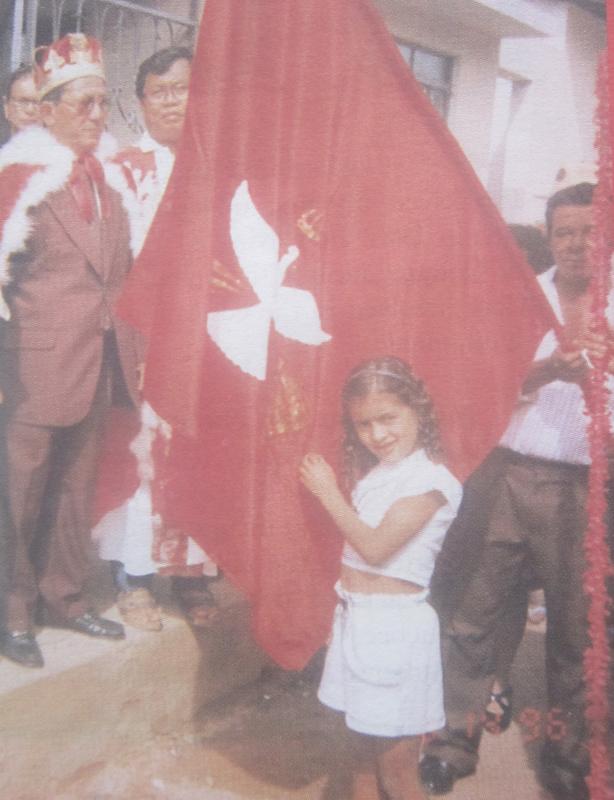The Red Flag Of The Holy Spirit
By Fr. Bart Toledo
 One of the many cultural shocks I experienced upon arriving in Brazil was the celebration of the Feast of the Holy Spirit. It is celebrated with unique traditional pomp, lots of noise, a red flag, an “emperador”, a “maestro” and a banquet.
One of the many cultural shocks I experienced upon arriving in Brazil was the celebration of the Feast of the Holy Spirit. It is celebrated with unique traditional pomp, lots of noise, a red flag, an “emperador”, a “maestro” and a banquet.
Not One Celebration but Many
The Church has one fixed date for this celebration the Feast of Pentecost. But here in Brazil, any dates suffices according to the needs of a community or of a family-in-charge of the celebration. Usually a community has two days for its annual fiesta, the feast of the patron saint on the first and that of the “Divino Espiritu” on the second. More crowds show up the second day due to the banquet that takes place in the house of the “Emperador”.
Preparation – Collection
The period of preparation for the fiesta depends on the proposed project of the emperador for the improvement of the church and on the kind of banquet he plans in red shirts carrying a red flag visits families, signing and clapping a song of the Holy Spirit. The flag holder waves the flag all over the members of the family as a sort of blessing. The family gives a donation at the end of thee visit. The visit sometimes extends to other communities and other parishes.
This year Varzeas, one of the communities that celebrates this fiesta, made its preparation for the whole year. The emperador planned to improve the roofing of the Church, to provide a ceiling and to repaint the entire Church. Aside from the flag collection, he wrote letters to former residents of Varzeas who are working in big cities. He was able to collect more than enough for his project and for the banquet. He invited the bishop and other priest to grace the occasion. The bishop found no reason to refuse.
The Procession
After the celebrations, I complained about the procession. There was no procession of the image of the patron, St. Anthony. There was, instead, a procession of the emperador. The bishop and I had to walk with the entire community to fetch the emperador and to deliver him to his house after the Mass. I didn’t like the idea but I had to oblige with the bishop who, I suppose, is more in-culturated than I am. I was a bit impatient attending to the emperador. During the Mass I was distracted by the constant waving of the flag. The attention of the crowd was more on the royal couple seated in a place of honor than on the Eucharist. After the Mass, a raffle of names was held to determine the next emperador and the families in charge of various tasks. The festivities usually last until evening.
The Pastoral Challenge
 Many priests, foreigners and Brazilian alike, don’t seem to be happy with this celebration. Many see its hassle and the lack of the faith respect. People’s interest and participation are purely due to tradition. Faith, if any, is in the flag and not in the Holy Spirit. When the flag is folded and hidden away, the people stay away from the Church. During the rest of the year celebrations. Except Christmas and Holy Week, are sparsely attended. The people become active again when the flag comes out again. The only very positive aspect is the physical improvement of the church which depends so much on the goodwill of the emperador. The celebration hardly helps the improvement of the Christian commitment of the community.
Many priests, foreigners and Brazilian alike, don’t seem to be happy with this celebration. Many see its hassle and the lack of the faith respect. People’s interest and participation are purely due to tradition. Faith, if any, is in the flag and not in the Holy Spirit. When the flag is folded and hidden away, the people stay away from the Church. During the rest of the year celebrations. Except Christmas and Holy Week, are sparsely attended. The people become active again when the flag comes out again. The only very positive aspect is the physical improvement of the church which depends so much on the goodwill of the emperador. The celebration hardly helps the improvement of the Christian commitment of the community.
How to make this very popular celebration truly a celebration of faith is a constant challenge to us missionaries in Brazil.
A Day with the Lay Missionaries
 On my homeward journey from Brazil to the Philippines I had a chance to visit places in Europe.
On my homeward journey from Brazil to the Philippines I had a chance to visit places in Europe.
In Ireland an in London I spent some days with Filipino Columban lay missionaries. It was my first meeting with them but our encounter was like that of old-time friends. There was much warmth and openness there seemed to exist a bond between us. I guess it was not it was not merely our being Filipinos but much more our being missionaries.
I was very lucky when I moved from Dublin to Dalgan Park, the H.Q. of the Columbans. Fr. Sean Coyle was on vocation.
Together we went o Newbrigde, County Kildare, where three Filipino lay missionaries – Annie Budiongan, Lorna Cahayag, and Gracia Kibad – are working. We visited their pastor and the family of an Irish lay missionary working in Brazil. The relationship between the lay missionaries and the Irish families was very impressive. There was friendliness everywhere we went.
I met Roberto and Kris Mina and their daughter (Filipino lay missionaries) in Dublin during a meeting of the Viatores Christi. All of them were invited to share with departing Irish lay missionaries their experiences of adjusting to the Irish Culture.
In London I met Jasmin Lood, a Filipino lay missionary there. That was great.
I was so enriched by my brief encounter with the lay missionaries. A visit always meant much to me when I was in Brazil – something I seldom got, being assigned to a very remote area. For me, ‘wasting time’ with fellow missionaries is wasting time for God.
